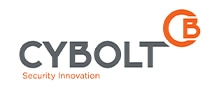Datenspeicherlösungen für Unternehmen HPE Storage
Verwirklichen Sie Flexibilität und vereinfachen Sie das Datamanagement in der Hybrid Cloud mit einer einheitlichen intelligenten Speicherplattform und einem KI-gestützten Cloud-Erlebnis für jeden Workload.
Leader im Gartner® Magic Quadrant™
HPE wurde im Gartner® Magic Quadrant™ for Enterprise Storage Platforms 2025 als Leader eingestuft
Schöpfen Sie das Potenzial Ihrer KI- und Analyse-Workloads aus
Unterstützen Sie Ihre anspruchsvollsten Workloads im KI-Maßstab mit Data Intelligence, Leistung der Enterprise-Klasse, effizientem Datenspeicher und der Einfachheit der Cloud mit HPE Alletra Storage MP X10000 und HPE GreenLake for File Storage.
Unsere Kunden
Ausgewählte Storage-Produkte
Portfolio weiterer Datenspeicher-Produkte
Verwalten Sie Ihre IT-Anforderungen mit einfachem und kostengünstigem Datenspeicher
HPE MSA Storage bietet schnelle, flexible und kostengünstige Shared Storage-Systeme, die sich mit Ihrem Unternehmen weiterentwickeln und die IT-Anforderungen erfüllen, ohne das Budget zu sprengen.
Schützen Sie Daten mit Bandspeicher mit Air-Gapping
Schützen Sie Ihr Unternehmen mit der zuverlässigen Sicherheit bandbasierter Backups mit Air-Gap-Funktion. Diese zuverlässigen Lösungen bieten sicheren, skalierbaren und kostengünstigen Datenspeicher, der darauf ausgelegt ist, Ihre Daten sicher und widerstandsfähig zu halten.
Datenspeicher-Kunden










HPE Lösungen vom Edge bis zur Cloud
Entdecken Sie die Möglichkeiten, wie HPE Sie dabei unterstützen kann, Möglichkeiten vom Edge bis zur Cloud zu erschließen.





